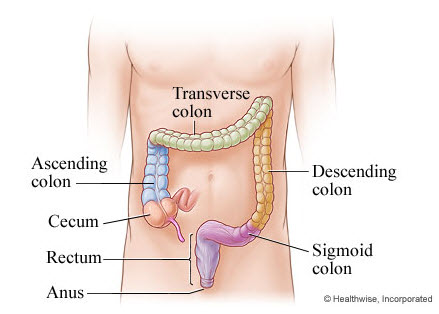 The last step in our Gut Series is the Large Intestine. Food in our guts come a long way, from our mouth and esophagus, to our stomach and then to our small intestine, where it moves into the large intestine. The ileocecal valveof the ileum (small intestine) passes material into the large intestine at the cecum. The last step occurs in the rectum. Our focus in this blog post will be on the large intestine as it plays important roles in nutrient absorption.
The last step in our Gut Series is the Large Intestine. Food in our guts come a long way, from our mouth and esophagus, to our stomach and then to our small intestine, where it moves into the large intestine. The ileocecal valveof the ileum (small intestine) passes material into the large intestine at the cecum. The last step occurs in the rectum. Our focus in this blog post will be on the large intestine as it plays important roles in nutrient absorption.
Nutrients absorbed
The large intestine is the portion of the digestive system most responsible for absorption of water from the indigestible residue of food. The large intestine or colon takes about 16 hours to finish up the remaining processes of the digestive system. Food is no longer broken down at this stage of digestion. The colon absorbs vitamins which are created by the colonic bacteria – such as vitamin K (especially important, as the daily ingestion of vitamin K is not normally enough to maintain adequate blood coagulation), vitamin B12, thiamine and riboflavin. In short, colon is a long organ, part of the large intestine, that absorbs water and mineral salts from the digestion of food in the lower part of the digestive tract. The remaining material, stools, are collected in the rectum and expelled through the anus.
Prebiotic fibers, like those found in Neocate Junior or Neocate Syneo, play a special role in the large intestine. Bacteria account for 35-50% of the volume of contents in the colon. Prebiotic fiber feeds the beneficial bacteria in our colon which helps to improve the health of our gut.
Conditions of the Large Intestine
Eosinophilic colitis and conditions like Food Protein Induced Enterocolitis (FPIES) and Short Bowel Syndrome (SBS) are all conditions that affect the large intestine. These conditions can disrupt the GI lining of the large intestine so that nutrients may not be absorbed and utilized, as they should. Neocate is appropriate to help nutritionally manage these food allergy related conditions because it is so easy to absorb and is 100% hypoallergenic and elemental.
We hope you learned about what goes on in the human gut and what specific conditions can affect certain sections of the GI tract, from the mouth, esophagus, stomach, to the small and large intestine.
~ Christine Graham-Garo






